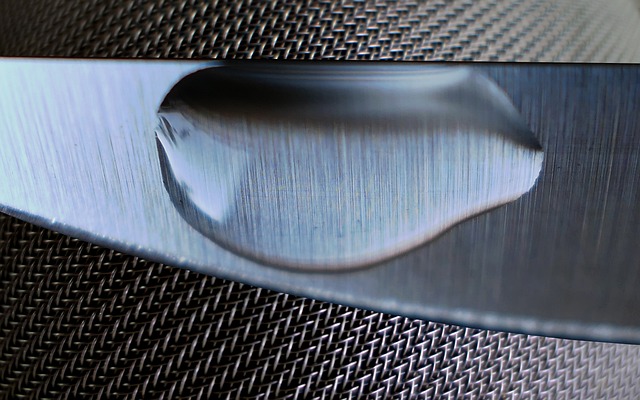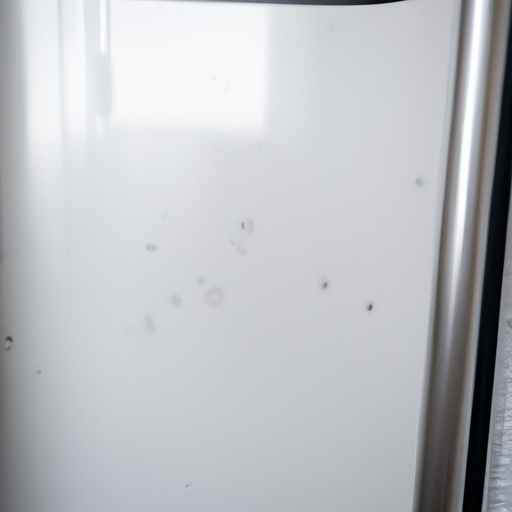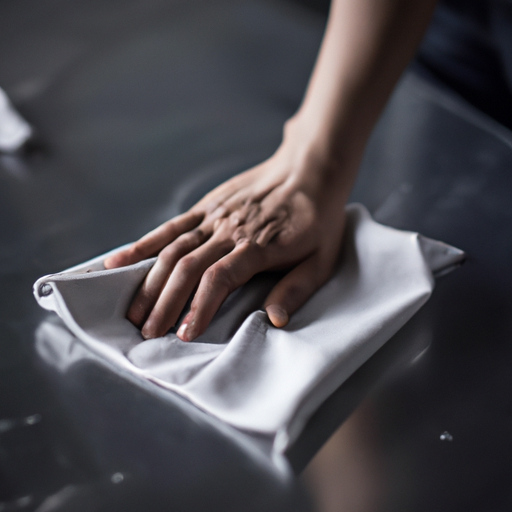This comprehensive guide will walk you through the best techniques and materials to clean your stainless steel appliances. Learn how to maintain their shine and prevent damage like a pro, and say goodbye to stubborn stains and spots.
Why is Cleaning Stainless Steel Appliances a Challenge?
Cleaning stainless steel appliances can be a daunting task for many homeowners. The sleek and shiny surface of stainless steel is not only prone to fingerprints and smudges but also easily shows water spots and streaks. This is because stainless steel has a smooth surface that is susceptible to showing any imperfections or residue left behind during the cleaning process. Additionally, using the wrong cleaning products or techniques can actually damage the stainless steel, leaving behind scratches or a dull appearance.
One of the reasons why cleaning stainless steel appliances can be challenging is the variety of cleaning products available on the market. Many cleaning products contain harsh chemicals that can strip away the protective coating on the stainless steel surface, making it more susceptible to stains and scratches. Furthermore, using abrasive materials, such as steel wool or scrub brushes, can also cause damage to the surface of the appliances.
Another factor that contributes to the difficulty of cleaning stainless steel appliances is the presence of hard water in some areas. Hard water contains minerals that can leave behind unsightly water spots and streaks on stainless steel surfaces. These water spots can be particularly stubborn to remove and may require special cleaning techniques or products.
In addition to the above challenges, the size and shape of stainless steel appliances can also make cleaning more difficult. Appliances like refrigerators and ovens often have intricate designs and tight spaces that can be difficult to reach with traditional cleaning tools. This can make it challenging to thoroughly clean all areas of the appliance and ensure a streak-free finish.
A stainless steel refrigerator covered in smudges and fingerprints
The Magic of Vinegar and Olive Oil: Are they the Ultimate Cleaning Duo?
Vinegar and olive oil have long been hailed as effective natural cleaning agents, and when it comes to cleaning stainless steel appliances, they are often touted as the ultimate duo. Vinegar, with its acidic properties, helps to break down grease and grime on the surface of stainless steel. Olive oil, on the other hand, acts as a natural polish, leaving a shiny and protective layer on the stainless steel surface.
To use this cleaning duo, start by diluting vinegar with water in a spray bottle. The recommended ratio is one part vinegar to two parts water. Spray the solution onto a microfiber cloth and gently wipe down the stainless steel surface, following the grain to minimize streaks. The vinegar will cut through any grease or residue, leaving the surface clean and shiny.
After using vinegar, it's time to bring in the olive oil. Apply a few drops of olive oil onto a clean microfiber cloth and buff the stainless steel surface in circular motions. The olive oil will not only add shine but also create a protective barrier on the stainless steel, making it more resistant to fingerprints and smudges.
It's important to note that when using vinegar and olive oil, less is more. Using too much vinegar can cause the surface to become dull, while using too much oil can leave behind a greasy residue. So, it's best to start with small amounts and gradually add more if needed.
"Streaks Be Gone!": The Correct Way to Wipe Your Appliances
When it comes to cleaning stainless steel appliances, one of the biggest challenges is avoiding streaks and smudges. But fear not, there is a correct way to wipe your appliances to ensure a streak-free finish.
First and foremost, gather a few soft microfiber cloths. These cloths are gentle on stainless steel surfaces and are less likely to leave behind lint or streaks. Avoid using abrasive scrubbers or rough materials that can scratch the surface of your appliances.
Next, dampen one of the microfiber cloths with water or a mild cleaning solution specifically formulated for stainless steel. Make sure the cloth is not dripping wet, as excessive moisture can lead to streaks. It's important to note that you should never spray cleaning solutions directly onto the appliance, as this can also result in streaks.
Using gentle, circular motions, start wiping the stainless steel surface. Follow the grain of the stainless steel to minimize streaking. Applying too much pressure or scrubbing vigorously can also create streaks, so be sure to use a light touch.
As you move along, periodically switch to a dry microfiber cloth to buff the surface and remove any remaining moisture. This final step helps to ensure a streak-free finish and leaves your appliances looking sparkling clean.
A hand wiping down a stainless steel surface with a cloth following the grain of the steel
How often should you clean your stainless steel appliances?
Cleaning your stainless steel appliances regularly is essential to maintain their shine and prevent the build-up of dirt, fingerprints, and smudges. But how often should you clean them? Well, it depends on factors such as usage and the environment in which they are placed.
Ideally, it is recommended to wipe down your stainless steel appliances at least once a week. This will help to remove any surface grime and keep them looking their best. However, if you have a busy household or frequently use the appliances, you may need to clean them more often.
In high-traffic areas such as the kitchen, where appliances are more prone to splatters and spills, it's a good idea to give them a quick wipe down after each use. This will prevent any food residue or liquids from drying on the surface and potentially causing stains.
Additionally, if you notice any fingerprints or smudges on your appliances, it's best to address them promptly. These can be easily removed with a microfiber cloth and a mild cleaning solution.
Finally, consider the environment in which your stainless steel appliances are located. If they are placed in a dusty area or near a source of grease or oil, you may need to clean them more frequently. Pay attention to any visible dirt or grime and adjust your cleaning routine accordingly.
Cleaning Methods for Stainless Steel Appliances:
| Appliance | Cleaning Method | Special Materials | Additional Tips |
|---|---|---|---|
| Stove | Soap and Water | Steel Wool | Wipe dry after cleaning |
| Sink | White Vinegar | Baking Soda | Use a soft sponge |
| Refrigerator | Dish Soap and Water | Soft Cloth | Clean the outside too |
| Dishwasher | Baking Soda and Water | Dish Detergent | Run a cycle with vinegar |
Congratulations! Now you know the secrets of cleaning stainless steel appliances like a professional. Remember, the key to keeping your appliances looking brand new is regular maintenance. So, keep your cleaning supplies handy and make these methods a part of your regular cleaning routine.



